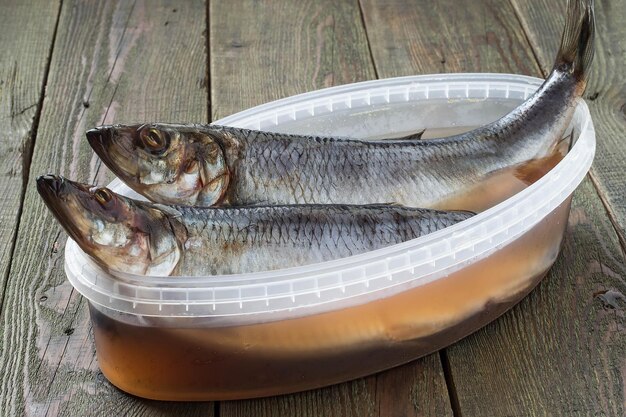How Long is That Fish Good For? Mastering Fish Storage in Your Refrigerator
Opening your fridge to a caught whiff of seafood can raise an immediate, unpleasant question: Did that fish go bad? Handling and storing fish properly is essential for ensuring its freshness and safety. In exploring the longevity of fish in the refrigerator, we dive deep into best practices for the freshest outcome, explore related aspects of fish storage, and how to maximize the shelf life of your fish in a way that's both safe and tasty. 🐟
The Freshness Timeline: How Long Fish Typically Lasts in the Fridge
When you bring fish home from the store or local market, timing is everything. While different types of fish may have different shelf lives, a general rule of thumb is that most fresh fish should be consumed within 1-2 days when stored in the refrigerator. This time frame ensures the fish retains its flavor, texture, and safety for consumption.
Factors Affecting Fish Freshness
- Type of Fish: Oily fish like salmon and mackerel might spoil faster than white fish such as cod.
- Storage Temperature: Ideally, fish should be stored at the coldest part of your refrigerator, approximately 32°F (0°C).
- Fish Preparation: Cleaned and gutted fish or fish fillets might have a slightly longer shelf life than whole fish.
- Packaging: Airtight packaging or proper wrapping can extend the life of your fish by preventing oxygen exposure.
Prolonging the freshness of fish isn't just about following set timelines; it's about employing techniques to optimize conditions for storage.
Storing Fish: Best Practices for Freshness and Safety
Preparing Fish for Refrigeration
- Clean Thoroughly: Rinse fish under cold water to remove any surface particles.
- Dry and Wrap: Pat the fish dry with a paper towel before wrapping it in clear plastic wrap or aluminum foil.
- Layer with Ice: Place wrapped fish on a bed of ice or in a shallow pan to maintain its temperature if the fridge isn’t particularly cold.
Packaging Options
- Vacuum Sealing: An air-tight solution that can extend fish freshness significantly if refrigerator space and tools allow.
- Plastic Wrap vs. Aluminum Foil: Both can work well, but aluminum foil is a better barrier to oxygen.
- Resealable Bags: Ideal if you’re storing fish in smaller portions.
Tip: Storing fish on a deeper shelf rather than the fridge door ensures a more consistent temperature.
Related Subtopics: Freshness Beyond the Fish
Understanding "Sell-By" and "Use-By" Dates
Sell-By Date: This is the date the store sells the fish; it doesn't necessarily denote a deadline for consumption but indicates optimal freshness at purchase.
Use-By Date: More critical, this date is a guide for when the fish should be consumed to guarantee freshness.
Fish Odor as a Freshness Indicator
A clear indication of a fish's freshness can be determined by its smell:
- Fresh Fish: Has little to no fishy odor, a sign of freshness.
- Slightly Off: A mild aroma might indicate it's nearing the need to be consumed or cooked.
- Strong Odor: Typically a warning that the fish is no longer safe to eat.
Visual Tip: The flesh of the fish should be firm to the touch and not exhibit any discoloration.
Maximizing Fish Shelf Life with Proper Freezing
If you can’t consume fish within the 1-2 days' window, freezing may be the best alternative. Proper fish storage techniques when freezing:
- Flash Freeze: Lay fish flat on a tray in the freezer first to firm them up before sealing.
- Label with Date: Always mark packages with the freezing date to keep track.
- Use Within Three Months: Although fish can be frozen for longer, using within this timeframe ensures peak freshness and quality.
Thawing Fish Safely
Thaw fish gradually by placing it in the refrigerator for several hours or overnight for best results. Avoid counter-thawing as it can lead to bacteria growth.
Summary Table: Key Takeaways for Fish Refrigeration 📝
| Action | Details | Emoji |
|---|---|---|
| Buy Fresh | Check for a fresh smell and firm texture | 🛒 |
| Store Well | Wrap in foil/plastic; store with ice | ❄️ |
| Consume Within | 1-2 days for optimum safety and taste | ⏳ |
| Freezing Option | Best within three months of date | 🧊 |
| Check Dates | Follow "Use-By" for key freshness | 📆 |
| Odor Test | Light to no smell is fresh | 👃 |
By understanding the nuances of storing fish, you can ensure that every dish is as fresh and savory as possible, without the worry of spoilage or waste.
The Reward of Responsible Fish Storage
Armed with the right information, handling fish responsibly within the confines of your refrigerator becomes an easy task. Maintaining the correct temperature, packaging, and observing the fish's storage life not only prevents waste but ensures your meals are both delicious and healthy. Whether you’re having a family dinner or prepping food for the week, knowing how to properly store fish gives you peace of mind and a supporting role in reducing food spoilage. 🌿
